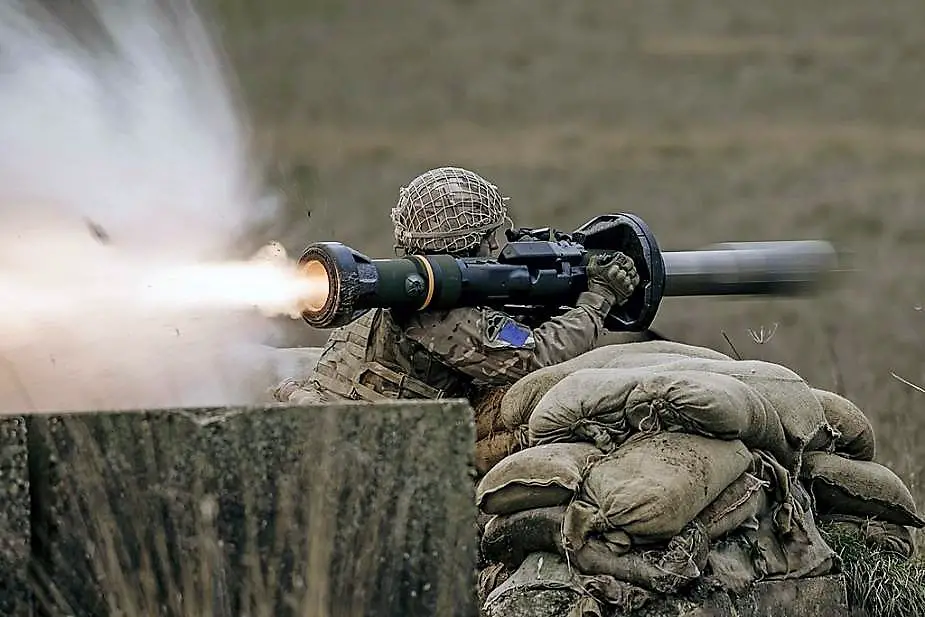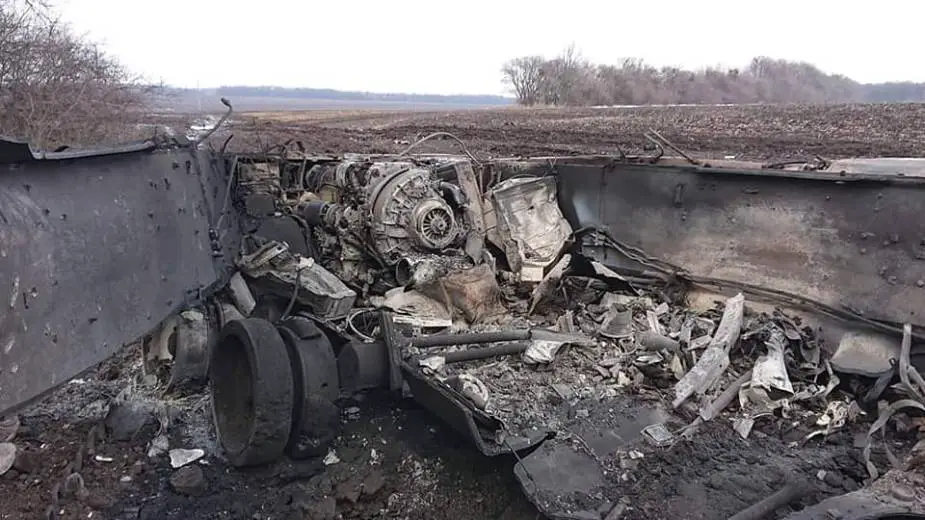According to Colton Jones in Defence Blog, Thales U.K., a business unit of France-based Thales technology company, was awarded a contract from the British Army for additional NLAW single-shot infantry anti-tank systems.
Follow Army Recognition on Google News at this link

A member of 2nd Battalion, The Parachute Regiment, fires a Next-generation Light Anti-tank Weapon (NLAW (Picture source: British MoD)
According to U.K. Defense Secretary Ben Wallace, the Ministry of Defense had signed a deal to start replenishing missile stocks run down by the supply of weapons to Ukraine. Within the contract, British Army will receive 500 NLAW anti-tank weapons in 2023, Colton Jones reports. Wallace also said a further deal for thousands of weapons for Britain and other customers will be signed next year.
The Saab Bofors Dynamics NLAW, also known as the MBT LAW or RB 57, is a fire-and-forget, lightweight shoulder-fired, and disposable (single-use) line of sight (LOS) missile system, designed for infantry use. The missile uses a soft-launch system and is guided by predicted line of sight (PLOS). It can carry out an overfly top attack (OTA) on an armoured vehicle, or a direct attack (DA) on structures and non-armoured vehicles.
The system was developed in Sweden by prime contractor Saab Bofors Dynamics, on behalf of the British and Swedish defence authorities who procured the system in a joint venture. It was mainly produced in the United Kingdom by Team MBT LAW UK, which included 14 subcontractors, most notably Thales Air Defence. Users of the weapon include Finland, Indonesia, Luxembourg, Malaysia, Sweden, Switzerland, Ukraine, and the United Kingdom.It also has night vision capability and is designed for all climate conditions and environments.
The NLAW is a man-portable, soft-launch, and confined-spaces (saltwater counter-mass) system, allowing the missile to be fired from almost anywhere; the operator can safely fire through any window of a room no bigger than 4 x 2.5 x 2.5 m (high). The missile is first shot out of the launcher with a low-powered ignition system, after which its main rocket ignites and propels it to the target. The guidance uses a predicted line of sight (PLOS) system. For a moving target, the operator maintains tracking for at least 2–3 seconds, the software embedded in the missile's INS system makes a record of the operator's aiming movement and computes the flight path which will intercept the target. After launch, the missile flies autonomously along the pre-programmed flight path, controlled by an inertial guidance system. The system weighs 12.5 kg (28 lb), with a rocket weight of 6.5 kg (14 lb); the mass of the warhead is 1.8 kg (4.0 lb). It is unnecessary for the operator to consider the target distance (so long as it is within range), or to stay exposed whilst the missile is in the air (fire-and-forget).
Against tanks and other armoured vehicles, the overfly top attack (OTA) mode is used; the missile flies about one metre above the line of sight, detonating the warhead above the target's weaker top armour via proximity fuze and magnetic sensors. The direct attack (DA) mode is used against non-armoured targets, detonating the warhead on impact via contact fuze as the missile flies on the line of sight. The launcher can be fired only once and is disposed of after use. The operator can adjust the arming distance of the missile, to avoid a premature detonation triggered by the sensors when it flies over non-targets. They can also fire down or up at a 45-degree angle. The missile will auto-destruct at the maximum flight time of 5,6 seconds, which is about 1,000 m (3,300 ft). It is designed to operate in all climate conditions and environments, from −38 to +63 degrees Celsius.
Preceding the escalation of the Russo-Ukrainian War by the 2022 Russian invasion of Ukraine, the United Kingdom supplied 2,000 NLAW systems to Ukraine, with another 1,615 delivered by 9 March 2022 to bolster Ukraine's military. More NLAWs were requested by the Ukrainian military following reports that they proved highly effective against Russian vehicles, leading to at least 100 more being allocated by Luxembourg. Alongside US FGM-148 Javelin anti-tank missile systems, delivered as a precaution against increased hostilities, the Ukrainian forces reported that NLAWs produced far greater damage against Russian armoured vehicles than their standard Soviet-era equipment. On 24 March 2022, the UK pledged to deliver a further 6,000 NLAWs and a senior Ukrainian military officer also claimed they were the "weapon of choice" for his troops, responsible for 30–40% of Russian tanks destroyed. NLAWs were the most numerous advanced guided anti-tank missile in Ukraine as of April 2022. An unknown number of launchers were captured by the armed forces of Russia and the pro-Russian self-proclaimed Donetsk People's Republic during the conflict.

Russian T-80 destroyed by NLAW in Ukraine (Picture source: armyinform.com.ua)















